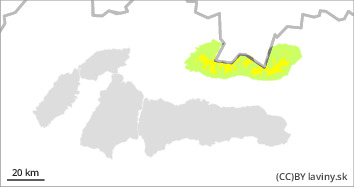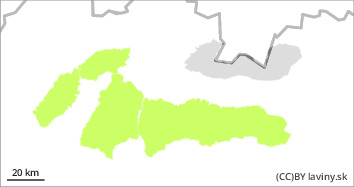
Danger level
 | 1800m |
|  |
|  |

Beware of wind-coiled boards, especially on westerly orientations.
There is a moderate avalanche danger in the High and Western Tatras above 1800 m above sea level. The main avalanche problem is wind-blown snow. Especially dangerous are western orientations, narrow chutes and places under rock walls. Locally, wind-blown snow slabs and pillows may occur. Their release is possible on steep slopes with high additional loads. Below 1800 m avalanche danger is low. The snow cover here is generally well consolidated due to the sub-zero temperatures.
Snowpack
The snow cover is very varied. At the highest altitudes, a very hard to icy layer alternates with wind-blown snow. In western orientations, locally there may be a larger amount of new, mostly loose snow. At mid-elevations, the water-soaked snow cover from the previous days will freeze and stabilise significantly due to overnight sub-zero temperatures.
Tendency
With gradual cooling stabilizing.


